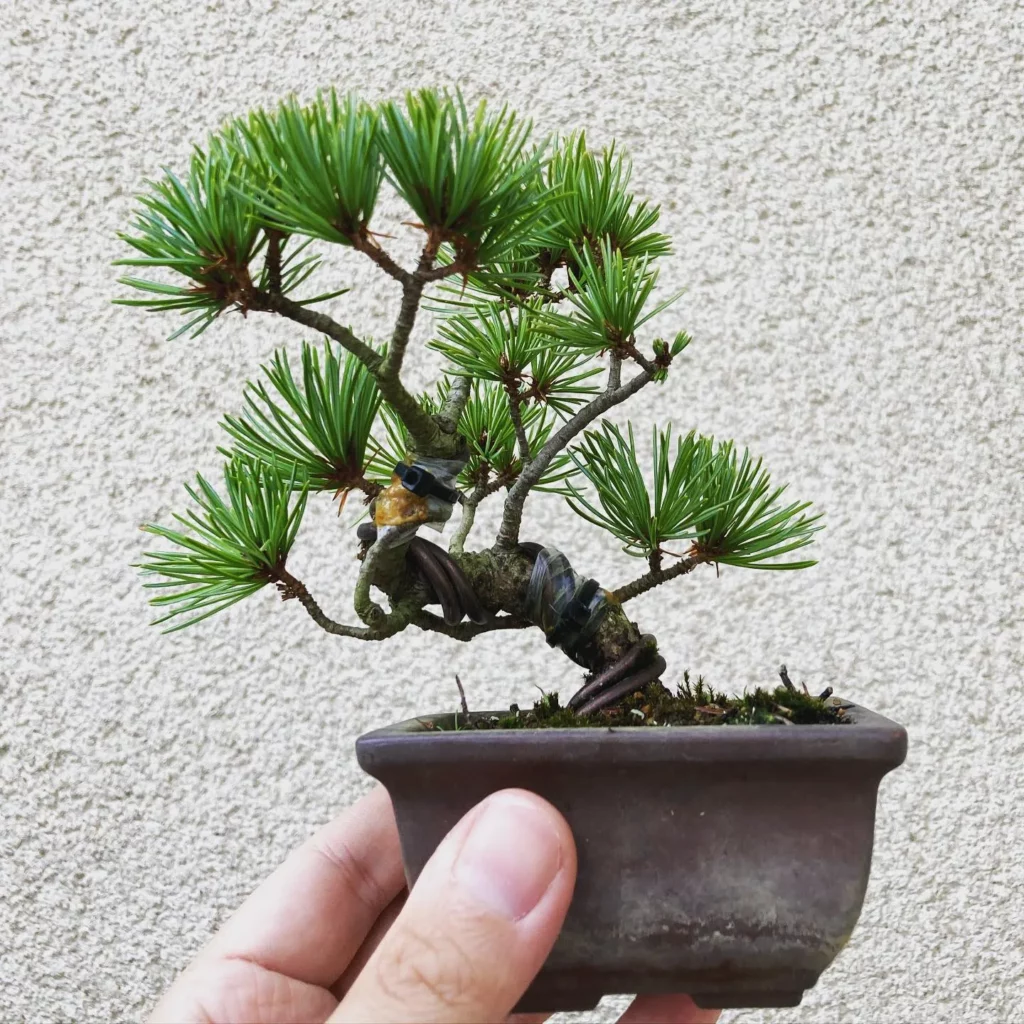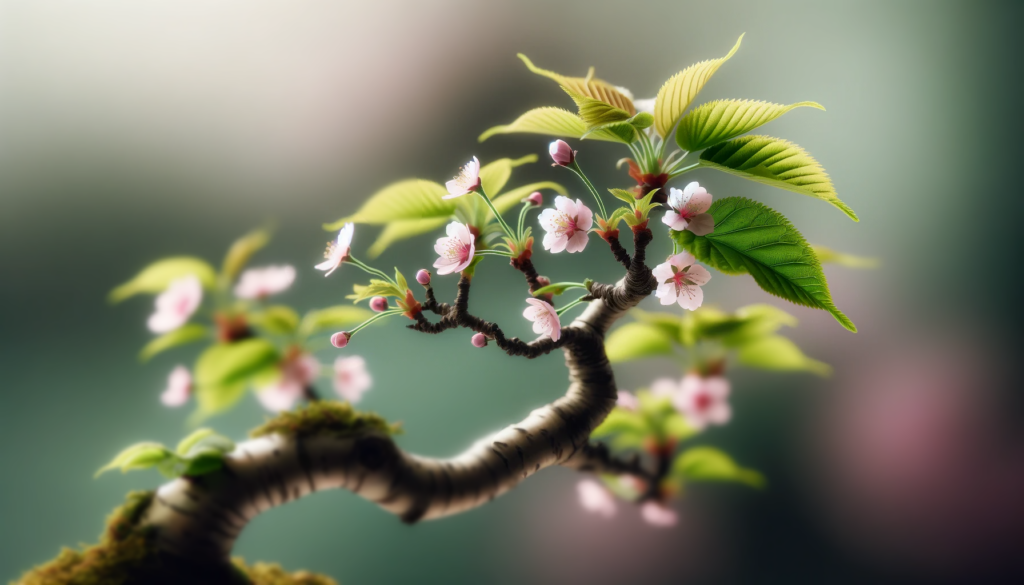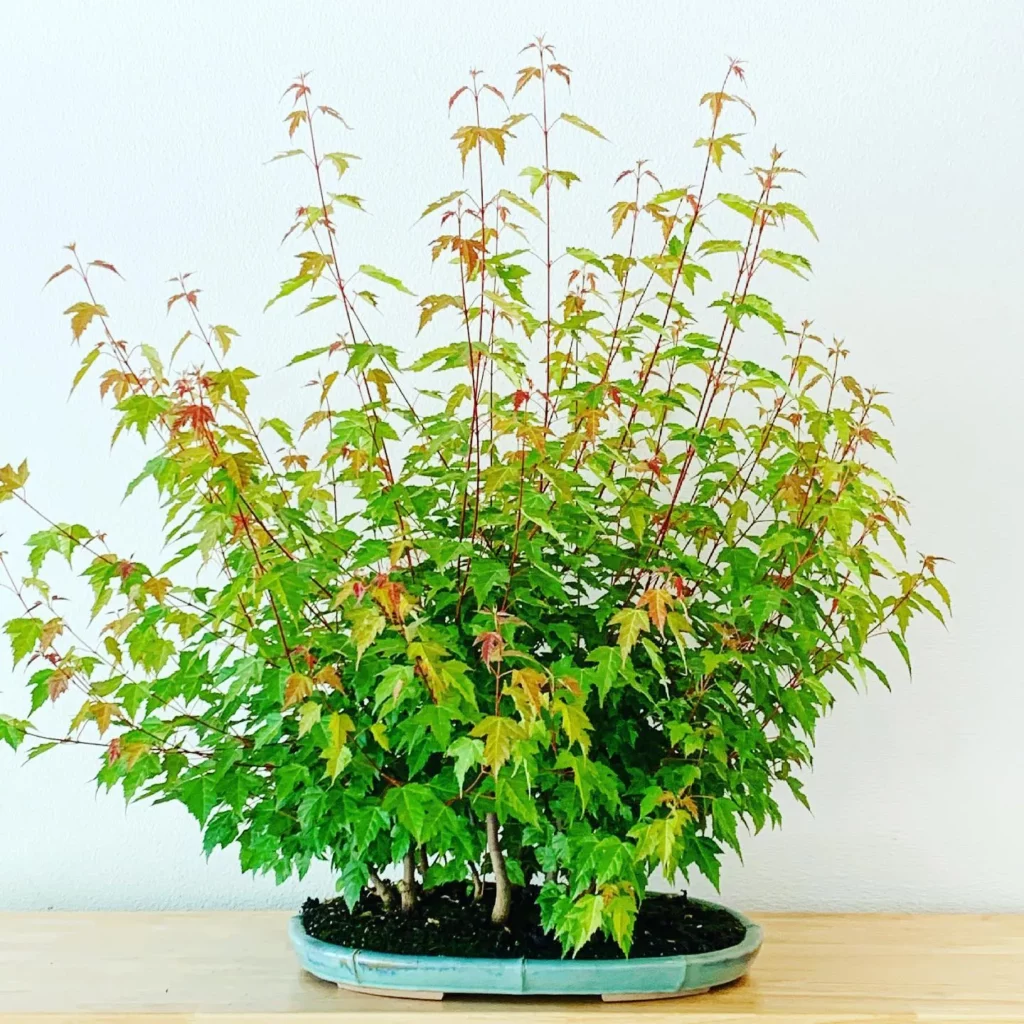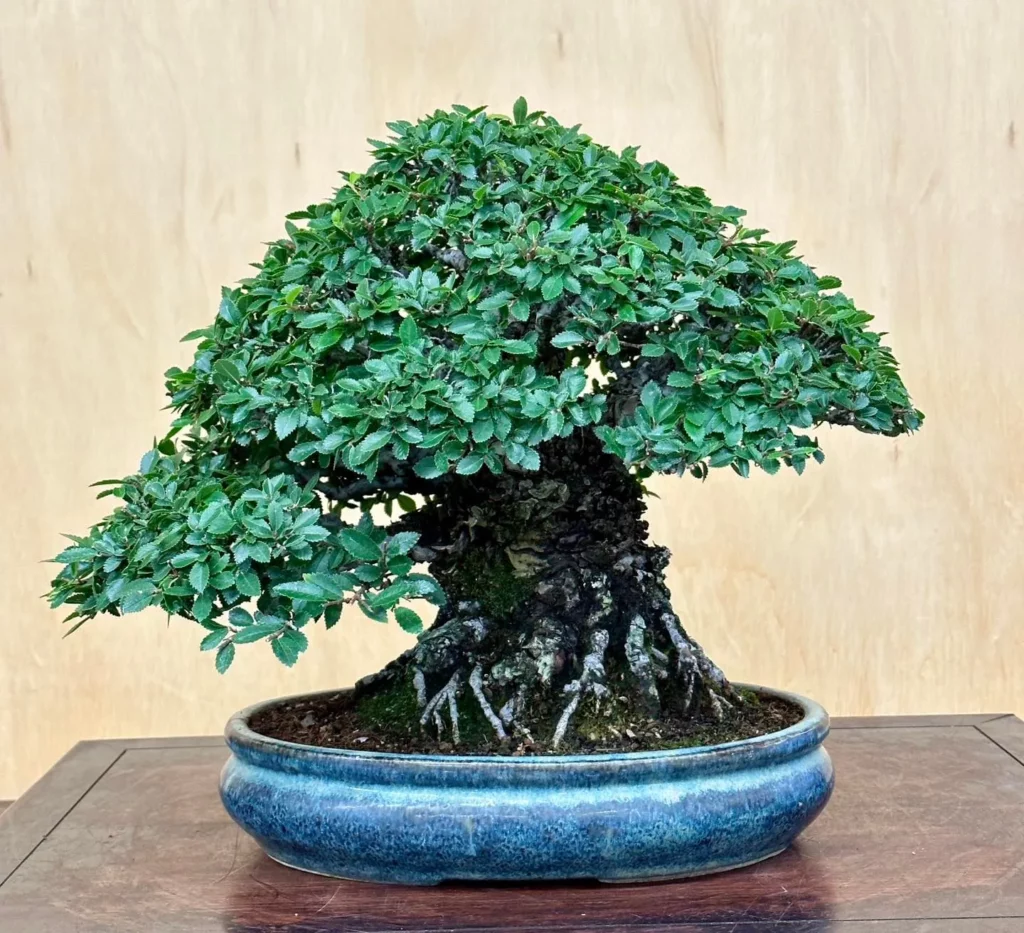Bonsai gardening is a unique horticultural practice that combines your passion for nature with the artistic expression of shaping and training trees. It involves the careful cultivation of young saplings or plants in the ground for a few years, before they are uplifted and placed in suitable containers for training. As these trees grow, their confined root system in pots limits their size, resulting in the creation of stunning miniature trees.
The allure of growing bonsai lies in the subtle fusion of natural beauty and artistic craftsmanship. Each bonsai tree reflects a miniature version of nature itself, capturing the essence of ancient trees in a compact form. Beyond its aesthetic appeal, growing bonsai offers a tranquil and meditative experience, connecting you with the present moment and the wonders of the natural world around you.
The Allure of Growing Bonsai: A Combination of Art and Nature

The allure of bonsai lies in its unique combination of artistic expression and a deep connection to nature. Bonsai is considered a living art form, as the trees constantly evolve and change, reflecting the passing seasons and the care of their caretakers.
Bonsai trees are miniature reflections of nature’s grandiosity, aiming to replicate the breathtaking beauty of ancient trees in a compact and delicate form. They allow us to witness the magnificence of nature on a smaller scale, creating a sense of wonder and appreciation.
Cultivating bonsai also provides a meditative and tranquil experience. As you care for your bonsai tree, you enter a state of mindfulness, focusing on the present moment and finding tranquility in the act of nurturing a living being. It becomes a form of meditation, allowing you to escape the stresses of daily life and find inner peace.
Bonsai holds significant cultural significance, particularly in Japanese culture. It symbolizes patience, endurance, and the appreciation of life’s simple beauty. The art of bonsai has gained international recognition, with enthusiasts and practitioners worldwide, who are captivated by its enduring charm.
No products found.
A Journey through the History of Bonsai
Bonsai has a rich history dating back over a thousand years. While it is often associated with Japan, it actually originated from ancient China. The precursor to bonsai, known as Chinese penjing, was practiced as early as 206 BCE during the Han Dynasty.
Bonsai made its way to Japan around the 6th century and took on distinct Japanese characteristics. The Japanese term “bonsai” itself reflects this cultural adoption, with “bon” meaning tray or pot and “sai” meaning to plant or cultivate.
Bonsai has since evolved and gained popularity worldwide, becoming a global phenomenon celebrated through exhibitions, conventions, and a sense of shared passion among bonsai enthusiasts.
Exploring Fascinating Facts about Bonsai
Did you know that bonsai trees have an incredible longevity, with some living for centuries when properly cared for? These miniature marvels can withstand the test of time, enchanting us with their beauty and resilience. In fact, there are bonsai trees known to be over a hundred years old, while the oldest recorded bonsai, the Ficus retusa, astoundingly surpasses the millennium mark at 1,000 years old.
Among the diverse array of bonsai species, one stands out for its captivating appearance: the dragon tree bonsai, also known as Dracaena marginata. This iconic bonsai species features slender, twisting trunks adorned with tufts of lush foliage at the top, reminiscent of mythical creatures. Its unique aesthetic adds a touch of enchantment to any bonsai collection.
The global appeal of bonsai extends far and wide, transcending cultural boundaries. Bonsai’s artistry and harmony with nature have earned it international recognition. Bonsai exhibitions, conventions, and the prestigious World Bonsai Convention serve as platforms that bring together bonsai artists, collectors, and enthusiasts from around the world. Through these gatherings, a shared passion for bonsai is fostered, and knowledge and inspiration are exchanged.
Common Bonsai Tree Styles: Crafting Living Works of Art

Bonsai trees can be styled in various ways to create living works of art. Whether you’re a bonsai enthusiast or looking to start your own bonsai journey, understanding the different bonsai tree styles will allow you to express your creativity and create stunning bonsai compositions.
Informal Upright Style (Moyogi)
The informal upright style, also known as Moyogi, is a popular bonsai tree style characterized by gentle curves in the trunk. This style mimics the upward growth of a tree with winding twists, creating a sense of elegance and natural beauty. The informal upright style allows for artistic expression as each curve in the trunk can represent the tree’s response to its environment throughout its life.
Formal Upright Style (Chokkan)
The formal upright style, or Chokkan, is characterized by a completely straight and upright trunk with a visible taper. This style aims to replicate the majestic presence of tall trees found in nature. The clean, vertical lines of the trunk convey strength and stability, making it an ideal choice for showcasing the beauty of the bonsai’s foliage and branching structure. The formal upright style is often seen in traditional bonsai displays and requires meticulous attention to detail during the styling process.
Slanting Style (Shakan)
The slanting style, also known as Shakan, portrays a trunk that grows at an angle, giving the appearance of a tree blown sideways by the wind. This style brings a dynamic and expressive element to bonsai compositions. It evokes a sense of movement and resilience, capturing a moment frozen in time. The slanting style requires careful manipulation to achieve the desired angle, ensuring a balanced and visually pleasing overall form.
Getting Started with Growing Bonsai: Choosing the Right Tree
When it comes to growing bonsai, selecting the right tree species is crucial for success. Consider your local climate and personal preferences to find the perfect tree that will thrive in your care.
There are numerous tree species that can be crafted into bonsai, offering a range of options to suit your taste. Hardy evergreens like juniper are popular choices as they can withstand different climates and require minimal maintenance. If you prefer a touch of exotic beauty, tropical plants like jade can add a unique element to your bonsai collection.
Another important consideration is whether you will be growing an indoor or outdoor bonsai. Indoor bonsai trees are typically kept in climate-controlled environments with less natural light. These trees thrive in drier conditions and are ideal for those who prefer a smaller, more manageable plant. On the other hand, outdoor bonsai trees benefit from natural sunlight and rainfall, requiring more attention to watering and protection from extreme weather conditions.
Choosing the right pot for your bonsai is just as essential as selecting the tree species. The pot should provide enough space for the roots to grow and allow for proper drainage to maintain the tree’s health. Consider the size of the pot in proportion to the tree and its aesthetics, as the pot plays a significant role in showcasing the beauty of your bonsai.
Start your bonsai journey on the right foot by carefully selecting a tree species that suits your local climate and your personal preferences. Whether you choose a hardy evergreen or an exotic tropical plant, ensure the tree will thrive in your chosen environment. Don’t forget to choose a pot that complements the tree and provides the necessary drainage for its health and vitality. With the right tree and pot combination, you’ll be well on your way to cultivating your own beautiful bonsai masterpiece.
Potting and Nurturing Your Bonsai Tree: Essential Steps
When it comes to potting and nurturing your bonsai tree, there are several essential steps you need to follow to ensure its health and growth. These steps include:
- Removing the tree from its original container: Gently take your bonsai tree out of its current pot, being careful not to damage the roots. This will allow you to assess the condition of the roots and ensure they are healthy.
- Cleaning the roots: Once the tree is out of its pot, gently remove any excess soil from the roots. This will help promote healthy growth by allowing the roots to absorb nutrients more efficiently.
- Pruning the roots: As bonsai trees grow, their roots can become tangled or overly long. Pruning the roots helps control their growth and encourages the tree to develop a more compact and balanced root system. Use sharp, sterile scissors or shears to carefully trim any roots that are excessive or overlapping.
- Choosing a suitable pot: Select a pot that is the right size for your bonsai tree, ensuring it provides enough space for the tree’s roots to grow and has proper drainage. Ceramic pots are often preferred due to their stability and functionality.
- Positioning the tree in the pot: Place the tree in the center of the pot, ensuring it is straight and upright. Gently adjust the position of the roots and add bonsai soil around them, filling the pot while ensuring there are no air pockets.
- Stabilizing the tree: If necessary, use wire or bonsai clips to stabilize the tree in the pot and prevent it from shifting. Be careful not to damage the branches or leaves during this process.
- Regular maintenance: Regular maintenance, including pruning for aesthetics and maintenance, is crucial to maintaining the health and appearance of your bonsai tree. Regularly check for any signs of pests or diseases and take appropriate action to treat the issue.
- Watering and fertilizing: Bonsai trees require consistent watering and fertilization to thrive. Follow the specific watering and fertilizing guidelines for your tree species, as different varieties have unique needs. Ensure that your tree receives adequate moisture and nutrients for healthy growth.
Pruning and Shaping Techniques for Bonsai Trees

Pruning and shaping are essential practices for maintaining the health and aesthetic appeal of bonsai trees. Whether you’re a beginner or an experienced bonsai enthusiast, understanding the different pruning techniques can help you transform your tree into a beautiful work of art.
No products found.
Aesthetic Pruning
Aesthetic pruning focuses on shaping the overall appearance of the bonsai tree to create an aesthetically pleasing silhouette. This technique involves removing large branches that disrupt the tree’s desired form and trimming twigs and branches to shape the tree’s canopy. By carefully pruning your bonsai tree, you can achieve graceful curves and balanced proportions.
Additionally, removing suckers – small, unwanted shoots that grow from the trunk or branches – is necessary for maintaining a neat and tidy appearance. By regularly removing these suckers, you can ensure that your bonsai tree remains visually appealing.
Maintenance Pruning
Maintenance pruning is an ongoing process that involves routine care and maintenance of your bonsai tree. This technique includes removing dead wood to promote healthy growth and prevent disease. Trimming broken or crossed branches helps maintain the tree’s structural integrity while shortening twigs encourages the growth of new shoots, resulting in a well-balanced branch structure.
Regular maintenance pruning is essential to keep your bonsai tree healthy and thriving. By removing unnecessary foliage and maintaining the tree’s overall shape, you can ensure its long-term well-being.
Pruning Tips
- Prune your bonsai tree during its dormant period, typically in late winter or early spring.
- Use sharp, clean pruning shears to prevent damaging the tree.
- Before pruning, step back and assess the tree’s overall shape and desired form.
- Make cuts at a slight angle to encourage healing and minimize the visibility of pruning scars.
- Apply wound paste after pruning to protect the tree and promote faster healing.
Watering and Fertilizing
Proper watering and fertilizing practices are crucial for the health and growth of your bonsai tree. Bonsai trees have unique watering requirements due to their confined root system in small pots. It’s important to water the tree thoroughly, ensuring that the soil is evenly moist but not waterlogged.
Fertilize your bonsai tree regularly using a balanced fertilizer to provide essential nutrients for healthy growth. Follow the instructions on the fertilizer packaging and adjust the frequency based on your tree’s specific needs and the season.
The Joy of Growing Bonsai: Connecting with Nature

Growing bonsai offers numerous benefits beyond just gardening. It provides a sense of stress relief, as caring for bonsai trees can be a meditative and calming activity.
The process of tending to bonsai trees allows you to escape the hustle and bustle of daily life and connect with nature on a deeper level. The act of pruning, shaping, and nurturing these miniature trees encourages a sense of mindfulness and tranquility, offering a respite from the stresses and pressures of modern living.
Additionally, growing bonsai is a creative outlet that allows for personal expression. Shaping and styling the trees according to your vision and aesthetic preferences allows you to harness your creativity and create living works of art. Whether it’s sculpting intricate branch structures, developing unique foliage arrangements, or experimenting with different pruning techniques, bonsai gardening offers a canvas for artistic exploration.
Furthermore, cultivating bonsai fosters a deep appreciation for nature and the beauty of miniature trees. As you care for these living beings, you develop a heightened sensitivity to their growth, development, and response to environmental conditions. This intimate connection with nature allows you to marvel at the intricate details of each tree, from the delicate leaves to the gnarled barks, and instills a profound appreciation for the miracle of life.
Whether you’re a seasoned bonsai enthusiast or a beginner, the joy of growing bonsai is accessible to all. Engaging in this ancient art form allows you to tap into a sense of wonder, creativity, and accomplishment while embracing the calming and therapeutic benefits it offers. Begin your journey into the world of growing bonsai and unlock a whole new world of beauty, inspiration, and connection with nature.
Embracing the Fascination of Growing Bonsai: Start Your Journey
Are you ready to embark on a captivating bonsai journey? Whether you have a green thumb or simply have a curiosity for the art of bonsai, this is an exciting adventure that awaits you. Fortunately, there is a wealth of resources available to guide you every step of the way.
Beginner’s guides are a fantastic starting point to familiarize yourself with the basic principles of growing bonsai. These guides provide you with valuable insights into tree selection, potting techniques, pruning tips, and more. They lay a solid foundation for your foray into the world of miniature trees.
Additionally, online communities and local nurseries are invaluable sources of information and support. Online communities allow you to connect with experienced bonsai enthusiasts who are eager to share their knowledge and experiences. Local nurseries offer hands-on assistance, allowing you to choose the perfect tree and receive guidance tailored to your specific needs.
So, why wait? Start your bonsai journey today and discover the beauty and satisfaction of cultivating your own living works of art. With beginner’s guides, bonsai resources, and the support of fellow enthusiasts, you’ll soon find yourself immersed in the captivating world of bonsai gardening.
After this check out our other articles on:
FAQ
What is bonsai gardening?
Bonsai gardening is a craft that involves nurturing miniature trees in containers to create living pieces of art.
How does bonsai create aesthetic proportions?
The art of bonsai involves shaping trees to create aesthetic proportions, combining horticultural techniques with passion.
What are bonsai pots made of?
Bonsai pots are typically made of materials like ceramic, terra cotta, or wood, with ceramic pots being the most suitable due to their stability and functional qualities.
What is the appeal of growing bonsai?
Growing bonsai offers a unique combination of artistic expression and a deep connection to nature, serving as a living art form that evolves with the passing seasons.
What does bonsai symbolize in Japanese culture?
Bonsai has deep roots in Japanese culture and symbolizes patience, endurance, and the appreciation of life’s simple beauty.
Where did bonsai originate from?
Although bonsai is often associated with Japan, it actually originated from ancient China, where it was practiced as early as the Han Dynasty (approximately 206 BCE).
How old can bonsai trees live?
With proper care, bonsai trees can live for centuries. Some bonsai trees are known to be over a hundred years old, while the oldest recorded bonsai, the Ficus retusa, is an astonishing 1,000 years old.
What is the Dragon Tree Bonsai known for?
The Dragon Tree Bonsai, also known as Dracaena marginata, is one of the most iconic and visually striking bonsai species, known for its slender, twisting trunks and tufts of lush foliage at the top.
What are the different bonsai tree styles?
Bonsai trees can be styled in various ways, including the informal upright style (Moyogi), formal upright style (Chokkan), and slanting style (Shakan), offering versatility and artistic expression.
How do you choose the right tree for bonsai?
When getting started with bonsai, it’s important to select tree species suitable for your local climate and preferences, considering whether they will be grown indoors or outdoors.
What are the essential steps for potting and nurturing a bonsai tree?
Potting and nurturing a bonsai tree involve gently removing it from its original container, cleaning and pruning the roots, selecting a suitable pot, and ensuring regular maintenance, watering, and protection from pests and diseases.
What are the pruning and shaping techniques for bonsai trees?
Pruning and shaping techniques for bonsai trees include aesthetic pruning to shape the canopy and maintenance pruning to maintain a well-balanced branch structure. Proper watering, fertilizing, and wound care are also important aspects.
What are the benefits of growing bonsai?
Growing bonsai offers stress relief, creativity, and a deeper appreciation for nature, providing a connection to the present moment and the beauty of miniature trees.
How can I start my bonsai journey?
You can start your bonsai journey by accessing beginner’s guides, online communities, and local nurseries, where you can find the support and knowledge needed to cultivate your own living works of art.




